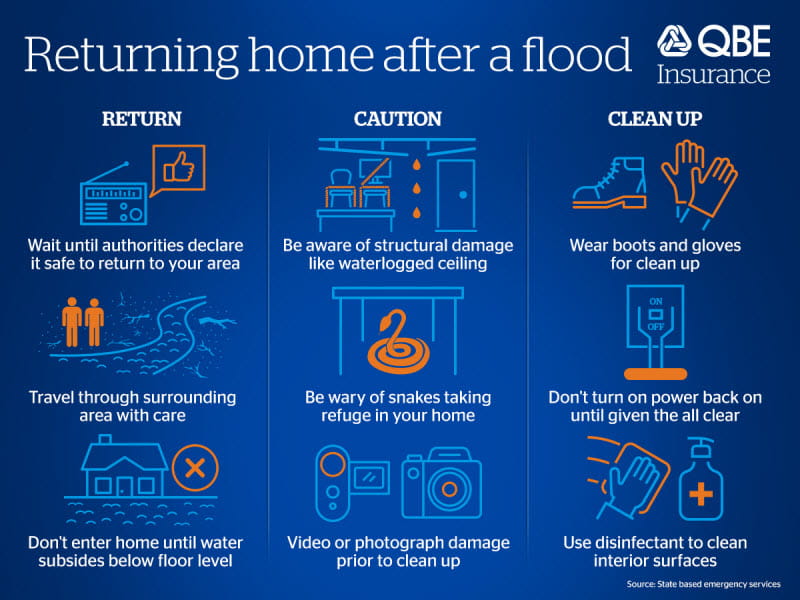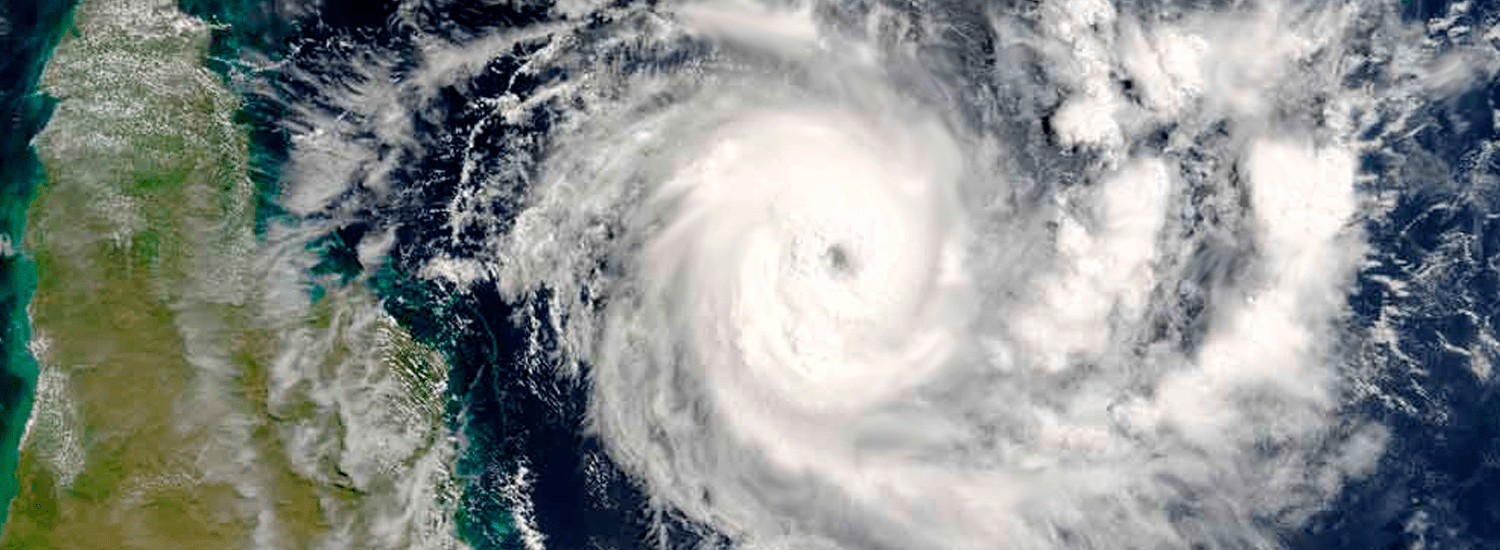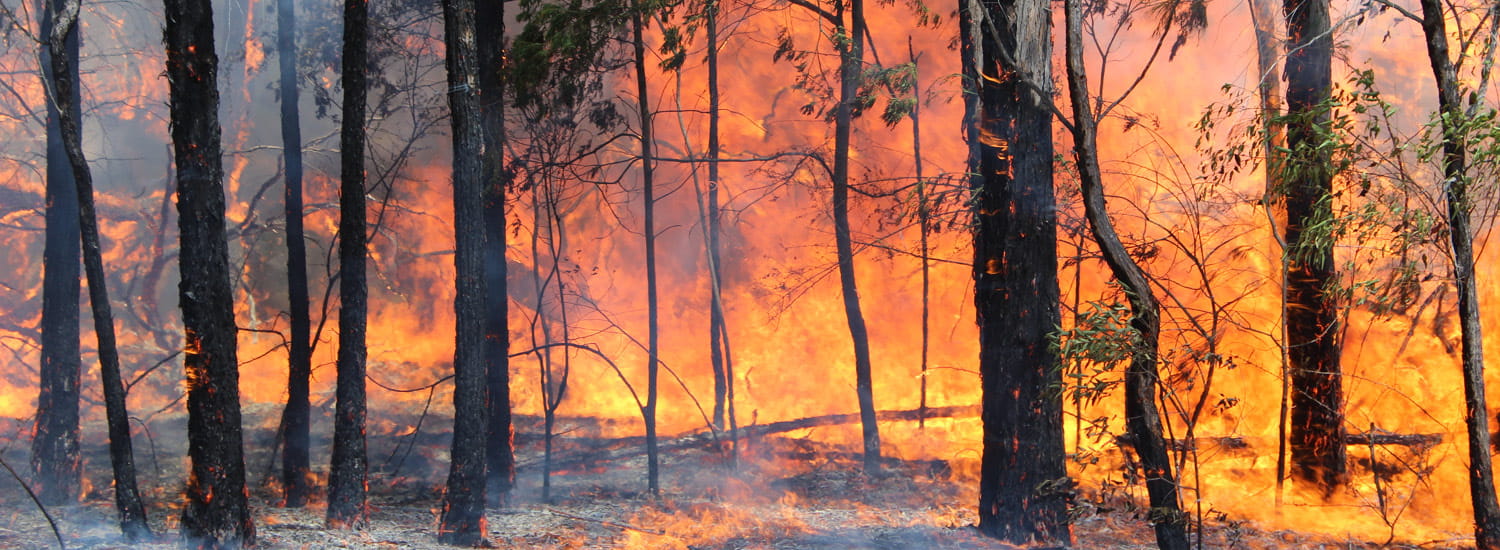What to do after a flood
This article is intended as a general guide only. You should consult your state fire and emergency services for further information.
Floodwaters leave extensive damage to homes and property in their wake and knowing what to do after a flood is critical to your safety and wellbeing.
Returning home
Before attempting to return home, wait until the authorities have given the all-clear for entering a flooded area, Emergency Management Australia warns.
Monitor the latest flood updates for current flood information and do not enter your house until water has subsided below floor level.
The Red Cross offers the following recommendations when dealing with the destruction caused by a flood:
-
wear rubber boots and gloves, eye protection, long pants and sleeves
-
carry a torch and look out for unwanted guests, such as snakes, that may have taken refuge in your home
-
if you are without power and/or gas, check with utility suppliers when services will be restored.
State emergency services, warn that people returning home should be aware that any electrical appliance or source, indoors or out, is potentially dangerous - don’t turn on anything, including lights, until an electrician can check it is safe to do so. Emergency Management Australia suggests exercising caution with potentially unstable flooring and staircases, as well as waterlogged ceilings that may be holding a large volume of water.
Documenting the damage
Your immediate concern may be to begin the clean-up work straight away. But Arron Mann, QBE General Manager, Short Tail Claims, says it’s important to capture images and details of the damage to your property and vehicles. “If volunteers come in to assist with the clean-up, supervise this process carefully to avoid items being disposed of when they could have been salvaged. Capture video or images of the damage before the clean-up effort starts – this will help during the claiming process.”
It’s also worthwhile starting a list of what’s damaged and noting whether it can be repaired or cleaned, Arron says.
Refer to our 'How to prepare your home for a flood' and 'What to do during a flood'
How to clean up after a flood
Arron Mann, QBE General Manager, Short Tail Claims, says property damage will largely depend on water depth and the flood’s duration. "One of the huge dangers with flood is mould," Arron says. “If you don’t dry a property properly it can lead to mould and this opens the door to some very significant health problems."
"The extent of repairs needed will also depend on what damage has been done to your foundations. Repairs will usually include washing out the property and then pulling out all the wall linings and floor coverings."
It may take several weeks to get everything dry so The Red Cross advises starting as soon as possible.
-
Deal with one room at a time and keep children away from the clean-up site. If it’s not raining, open all doors and windows. If the electricity has been restored by an electrician, having a heater turned on in as many rooms as possible will help speed up the drying process. If it’s raining, leave windows slightly ajar.
-
Take furniture outside, clean off mud and debris and dry away from direct sunlight, removing the back of the item, if possible, to air it out. Upholstered furniture can absorb floodwater contaminants so unless it is valuable, most likely it needs to be discarded. Alternatively, a professional cleaning service will be required.
-
Use disinfectant to clean walls and floors. When you’ve finished cleaning a room, apply a second treatment of disinfectant to kill germs and mould spores, and help get rid of the smell.
-
If your carpet has been wet-through it may need to be replaced. Soaked mattresses cannot be restored and should be discarded. Feather or polyester-filled pillows and bed coverings, should be dried away from direct sunlight before washing or dry-cleaning.
-
Only use water declared safe for human consumption to clean appliances such as dishwashers, washing machines and refrigerators. Don’t start your dishwasher or washing machine unless you know the sewer line is working.
-
Water and mud under the house needs to be removed but this may require assistance from a professional tradesperson, depending on how much water and mud has accumulated.
Hygiene
The Department of Health stresses the necessity of guarding against contamination from polluted water.
-
Disinfect surfaces that have been submerged in flood water in order to reduce the danger of infections, paying special attention to areas children can reach.
-
Wash and disinfect your hands frequently during clean-up.
-
Until the latest flood updates confirm that tap water is safe to drink, boil for one minute all water for drinking and washing, including dishes.
-
Discard all food that has come into contact with flood water, even sealed cans and jars.
Recovery and restoration
If your home is uninhabitable, you may need food, supplies, and accommodation contact your local emergency services for immediate help.
Your insurer can help with accommodation, food, clothes and other emergency supplies after a flood, according to Arron Mann, QBE General Manager, Short Tail Claims.
“If you are in significant need, let us know. We can make an early payment into your bank account if you and your family are in genuine need.”
All QBE home policies include flood cover, says Arron. “(But) business owners and farmers need to check whether they have flood cover and consider whether they need it as it is priced according to risk.”
Returning home after a flood can be stressful. If you are struggling with emotional distress reach out to Lifeline, the Australian Psychological Society, the Samaritans or your GP for support.
Need to make a claim?
We’re here to help. If you've been affected by a flood, get in touch to make a claim and we’ll go all out to put things right.










